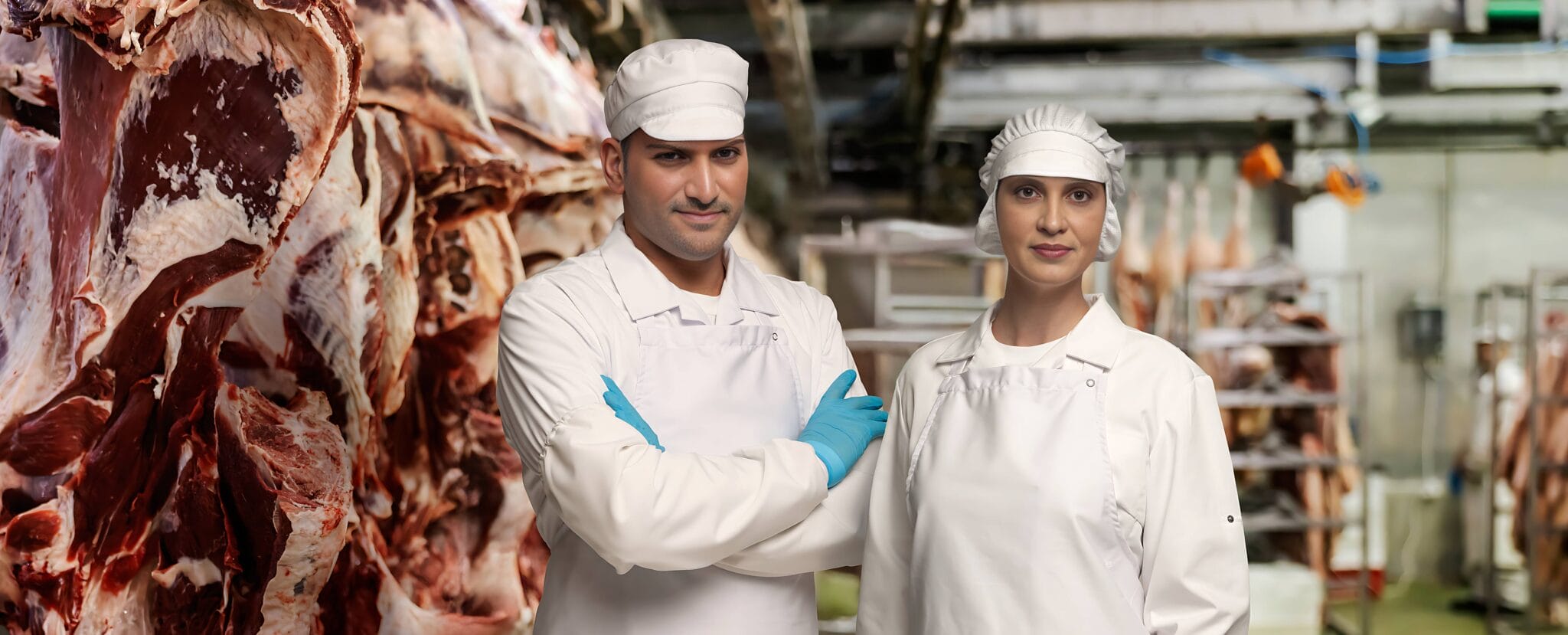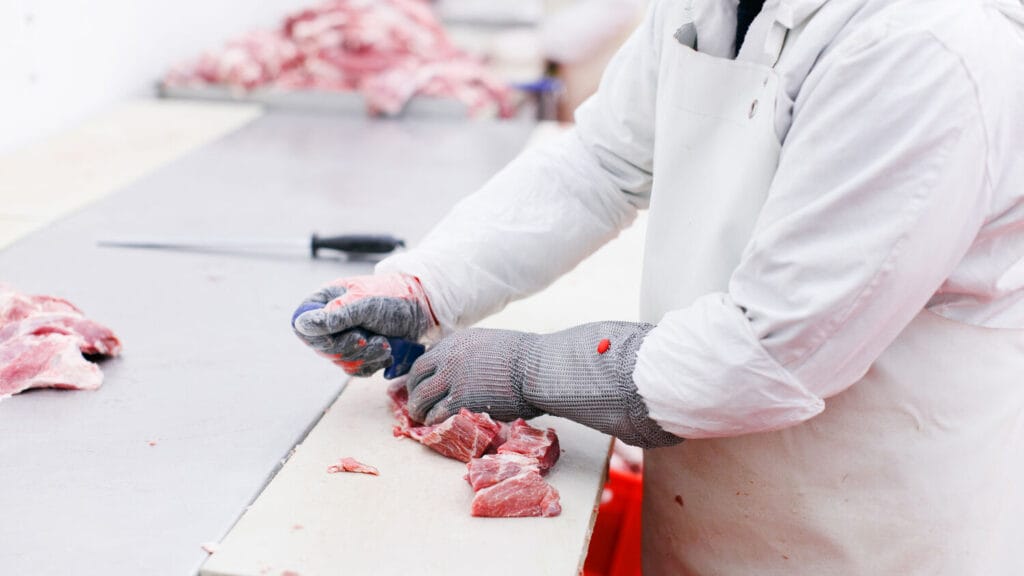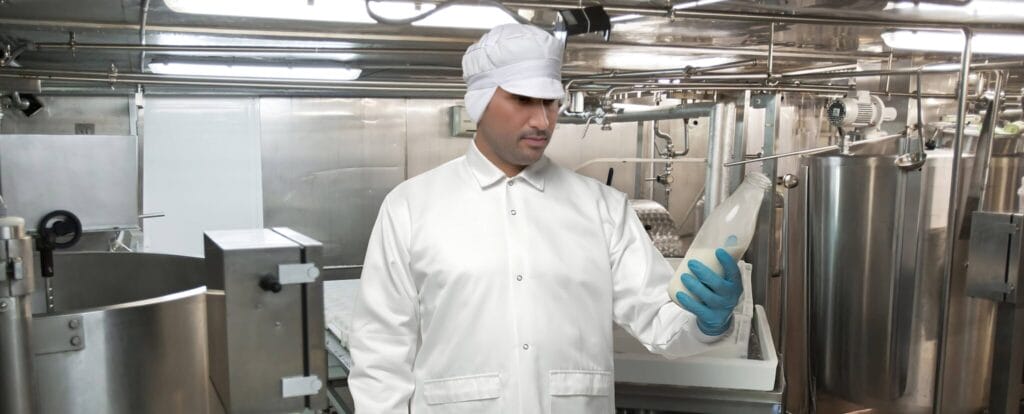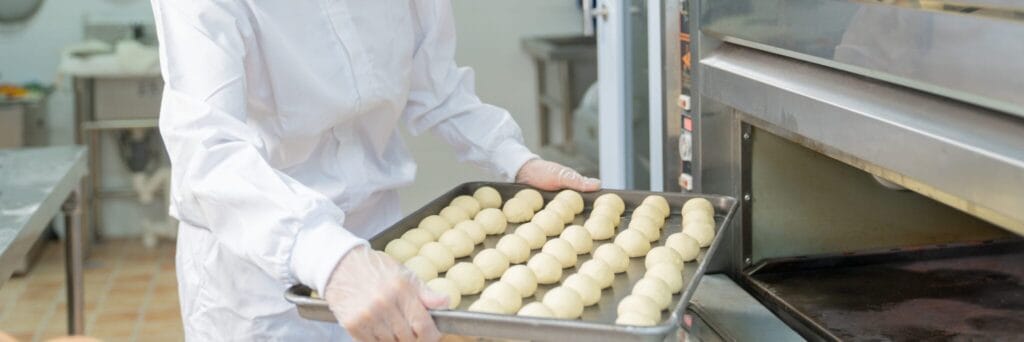
Workwear for temperature control in meat processing
Temperature control is a critical aspect of meat processing, essential for maintaining product quality, adhering to safety standards, and ensuring worker comfort. In meat processing facilities, the temperature must be strictly regulated to prevent spoilage and bacterial contamination, which can compromise food safety and quality. The Hazard Analysis and Critical Control Points (HACCP) system is a widely recognized approach used to ensure food safety, requiring stringent temperature management throughout the production process.
Moreover, maintaining a stable temperature is vital for worker safety and comfort, particularly in cold storage areas where temperatures can drop significantly. Proper temperature control helps prevent health issues such as hypothermia and frostbite. Compliance with industry standards, such as those set by the Occupational Safety and Health Administration (OSHA), is essential to safeguard workers’ health by providing suitable workwear designed to protect against extreme temperatures.
What type of workwear is essential for temperature control?
In the meat processing industry, specialized workwear is vital for effective temperature control. Insulated jackets, thermal gloves, and protective footwear are essential items that help maintain body temperature and ensure worker safety. Insulated jackets, often made from materials with high thermal retention properties, keep the body warm in cold environments, while thermal gloves protect hands from freezing temperatures.
Protective footwear is another critical component, designed to provide insulation against cold floors and prevent slips in wet or icy conditions. These garments not only protect workers from cold-induced health risks but also enhance their comfort and productivity. By investing in high-quality temperature control workwear, meat processing facilities can improve operational efficiency and worker satisfaction.
How to choose the right thermal workwear for your team?
Choosing the right thermal workwear for your team involves considering several factors, including material, insulation properties, and durability. When selecting materials, opt for fabrics known for their thermal insulation capabilities, such as wool or specialized synthetic fibers. These materials help retain body heat and provide comfort during long shifts in cold environments.
Insulation properties are equally important, as they determine the effectiveness of the workwear in extreme temperatures. Look for garments with appropriate insulation ratings based on the specific conditions within your facility. Additionally, durability is a key consideration, as workwear in meat processing facilities is exposed to harsh conditions and frequent cleaning. Durable materials and construction ensure longevity and cost-effectiveness.
Consider the different roles within your facility when selecting meat industry workwear. For instance, workers in cold storage areas may require heavier insulation than those in packaging zones. Customizing workwear to meet specific role requirements enhances both safety and efficiency.
Key features to look for in protective clothing
When selecting protective clothing for meat processing, it’s essential to focus on features like breathability, moisture-wicking, and resistance to cuts and abrasions. Breathable fabrics prevent overheating and allow moisture to escape, keeping workers comfortable even during physically demanding tasks.
Moisture-wicking properties are crucial for maintaining dryness and preventing discomfort caused by sweat accumulation. This feature is especially important in environments where temperature fluctuations occur between different processing areas. Additionally, resistance to cuts and abrasions is a vital safety feature, protecting workers from sharp tools and equipment commonly used in meat processing facilities.
By prioritizing these features, companies can provide their workers with protective clothing that not only ensures safety but also enhances overall comfort and productivity.
Case studies: Successful implementation of workwear solutions
Several meat processing companies have successfully improved their operations by implementing effective workwear solutions. For example, a leading meat processing firm in Europe partnered with Lindström to upgrade its thermal workwear. By adopting Lindström’s temperature-optimized rental service, the company observed a significant reduction in worker absenteeism due to cold-related illnesses.
Another case involved a North American company that introduced HACCP-compliant clothing to enhance hygiene standards. The implementation of specialized workwear, including thermal gloves and insulated jackets, resulted in improved worker satisfaction and a noticeable increase in productivity.
These case studies demonstrate the tangible benefits of investing in high-quality, temperature control workwear, showcasing how it can lead to enhanced safety, efficiency, and overall operational success.
The role of Lindström in enhancing workwear efficiency
Lindström plays a pivotal role in enhancing workwear efficiency for the meat processing industry. With a commitment to sustainability and innovation, Lindström offers a range of products and services designed to meet the unique needs of this sector. Their temperature-optimized rental solutions provide businesses with access to high-quality workwear without the burden of ownership, ensuring cost-effective and sustainable operations.
One of Lindström’s standout innovations is their use of RFID technology for garment tracking, which ensures proactive replacement and maintenance of workwear. This technology minimizes downtime and enhances operational efficiency by providing real-time data on garment usage and condition.
By choosing Lindström’s services, businesses benefit from a comprehensive approach that includes laundering, repair, and maintenance, allowing them to focus on their core operations while ensuring worker safety and comfort.
Temperature extremes across the meat-processing line
Temperature extremes present significant challenges across the meat-processing line, from cold storage areas to cooking and packaging zones. Cold-storage garments are essential for workers operating in freezing conditions, preventing cold stress and maintaining productivity. In contrast, heat-stress uniforms are crucial for employees working in areas with elevated temperatures, such as cooking and packaging zones.
By providing appropriate thermal workwear, companies can ensure worker safety and comfort, reducing the risk of heat-related illnesses and cold-induced injuries. Lindström’s workwear rental services offer a comprehensive solution for businesses seeking to manage temperature extremes effectively.
Must-have garment features (insulation, breathability, moisture-wicking)
When selecting temperature control workwear for meat processing, it’s crucial to focus on key garment features such as insulation, breathability, and moisture-wicking. Insulation is vital for maintaining body temperature in cold environments, while breathability prevents overheating and allows moisture to escape, ensuring comfort during long shifts.
Moisture-wicking properties are essential for keeping workers dry and comfortable, particularly in environments with fluctuating temperatures. By prioritizing these features, businesses can provide their workers with protective clothing that enhances safety, productivity, and overall well-being.
Laundering, RFID traceability & proactive replacement
Effective workwear management involves more than just providing the right garments. Regular laundering, RFID traceability, and proactive replacement are essential components of a comprehensive workwear solution. Lindström’s services include sustainable laundering processes that ensure garments remain hygienic and well-maintained, extending their lifespan and reducing environmental impact.
RFID technology offers real-time tracking of garment usage, enabling proactive replacement and minimizing downtime. This technology ensures that workwear is always in optimal condition, enhancing operational efficiency and worker safety.
Sustainability & cost ROI + quick implementation roadmap
Investing in temperature control workwear offers significant sustainability and cost benefits. By choosing a rental service like Lindström’s, businesses can access high-quality workwear without the upfront costs associated with ownership. This approach supports sustainable practices by reducing waste and promoting the circular economy.
Lindström’s quick implementation roadmap ensures a seamless transition to their rental services, minimizing disruption to operations. With a focus on sustainability and cost-effectiveness, Lindström provides businesses with a reliable and efficient workwear solution that enhances safety, comfort, and productivity.
| In-House Purchase | Basic Rental | Lindström Temperature-Optimised Rental | |
|---|---|---|---|
| Initial Cost | High | Moderate | Low |
| Maintenance | Self-managed | Partially managed | Fully managed |
| Sustainability | Varies | Moderate | High |
“Investing in high-quality, temperature control workwear leads to enhanced safety, efficiency, and overall operational success.”
FAQs
What is temperature control workwear in meat processing?
Temperature control workwear in meat processing refers to specialized clothing designed to protect workers from extreme temperatures, ensuring safety and comfort while maintaining hygiene standards.
How does Lindström’s workwear rental service benefit meat processing businesses?
Lindström’s rental service provides businesses with high-quality workwear without upfront costs, offering comprehensive management, including laundering, repair, and replacement, while promoting sustainability and cost-effectiveness.
What features should I look for in thermal workwear for meat processing?
Key features include insulation for warmth, breathability to prevent overheating, moisture-wicking for dryness, and resistance to cuts and abrasions to ensure safety and comfort.
How can I ensure compliance with HACCP standards through workwear?
By choosing HACCP-compliant clothing that meets industry standards for food safety, you can ensure compliance and protect both workers and products from contamination risks.





